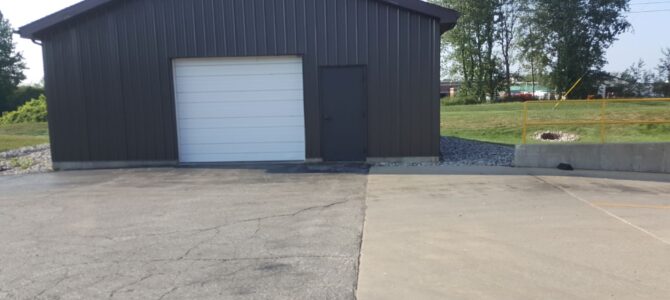USEPA’s RCRA Online is a source for memos and guidance from USEPA regarding the hazardous waste regulations. In a memo dated January 13, 1988, USEPA wrote that a storage shed located outside of a building where a reactive hazardous waste (D003) is initially generated could be considered a SAA (RO 11317). The Generator Improvements Rule rescinded this memo and revoked this interpretation.
The purpose of this article is to explain the USEPA changing its interpretation of “at or near the point of generation” by rescinding an earlier interpretation.
Before we begin…
- This is one article in a series that reviews all of the changes made to §262.15 by the Generator Improvements Rule.
- The location of these regulations within Title 40 of the Code of Federal Regulations (CFR) was changed by the Generator Improvements Rule. The satellite accumulation area regulations were located at 40 CFR 262.34(c), they are now found at 40 CFR 262.15.
- FAQ: What is a satellite accumulation area?
- FAQ: What is a central accumulation area?
Scope and Applicability:
- Accumulation of hazardous waste in a SAA is an option for both a large quantity generator of hazardous waste (LQG) and a small quantity generator of hazardous waste (SQG). Very small quantity generators of hazardous waste (VSQG) don’t have to comply with SAA regulations per §262.14(a).
|
Not sure of your hazardous waste generator category? |
- These new regulations were created by the Generator Improvements Rule, which may not yet be adopted by your state. FAQ: What is the status of the Generator Improvements Rule in my state?
- A generator may accumulate either or both of the following in a SAA:
- Acute hazardous waste
- Non-acute hazardous waste (aka: hazardous waste).
40 CFR 262.15:
There were no regulatory changes associated with this action.
What’s it mean?
In the incoming letter that resulted in the USEPA memo the company stated it generates waste chemicals – D003 for characteristic of Reactivity – which are accumulated in containers located in a storage shed outside of the building where the waste is generated. The waste chemicals are accumulated outside of the building for safety reasons. The company wished to know if these storage sheds could be considered, “at or near the point of generation” and therefore be managed as satellite accumulation areas.
In its memo reply USEPA stated that the storage sheds could be considered to be a SAA. At the time, USEPA felt that in some instances it is safer to accumulate hazardous waste away from the initial point of generation.
However, USEPA now reasons that because SAAs are subject to less stringent conditions than CAAs, it is not appropriate for such dangerous hazardous wastes to be stored in SAAs. Rather, if a generator accumulates hazardous waste that is so dangerous it needs to be accumulated away from the point of generation, it should be accumulated under the more rigorous accumulation standards for CAAs.
Also, USEPA does not consider a shed outside a building where a waste is initially generated to be “at or near the point of generation.” However, USEPA leaves its interpretation up to each state with an authorized hazardous waste program to determine what it considers to be, “at or near the point of generation.”
|
Daniels Training Services, Inc. 815.821.1550 |
Q: Does this mean that all reactive hazardous waste (D003) must be accumulated away from the initial area of generation and therefore could not be accumulated in SAAs?
A: No. However if, for safety reasons, which may be driven by the fire codes or OSHA regulations, any hazardous waste needs to be accumulated away from the initial area of generation, then that accumulation area should be considered a CAA, not a SAA.
Q: Are all storages sheds to now be considered to be CAAs and not SAAs?
A: No. USEPA did not intend that all storage sheds would be have to be CAAs. If a storage shed is located “at or near the point of generation” it could be considered to be a SAA.
Conclusion:
A USEPA memo served as an interpretation of its regulations for almost thirty years before being rescinded by the Generator Improvements Rule. Be sure to stay abreast of changes to the regulations by reading my blog, subscribing to my newsletter, and attending my training.
